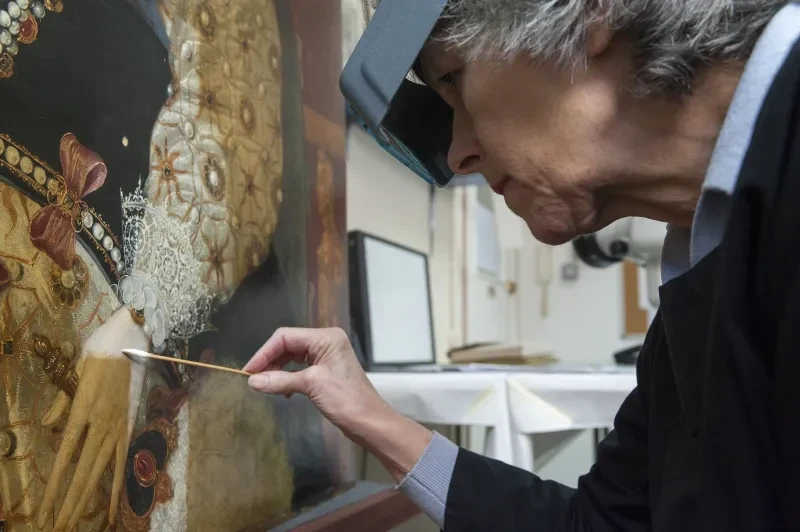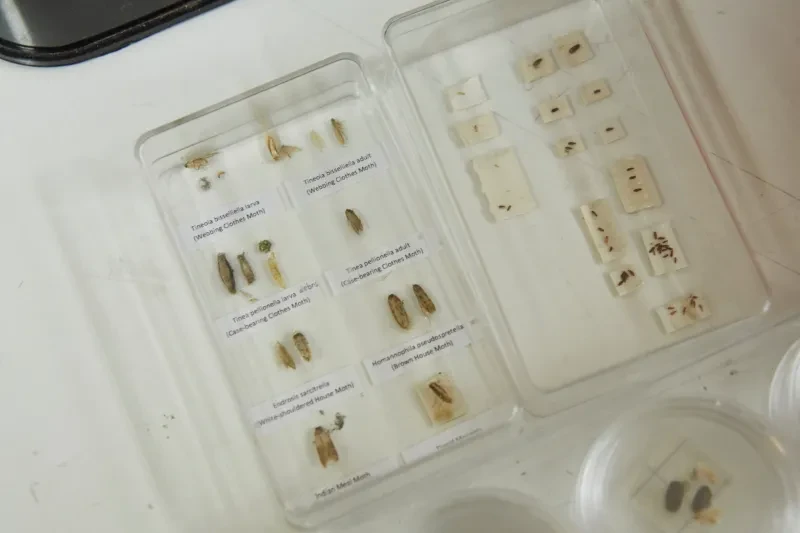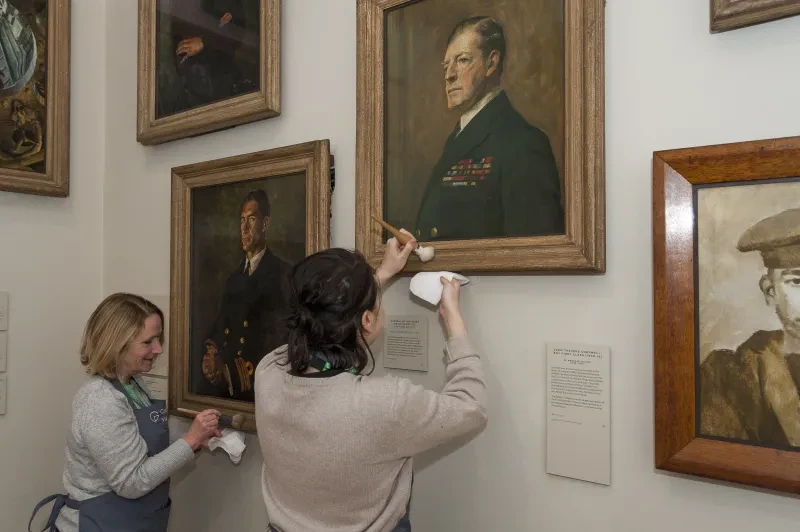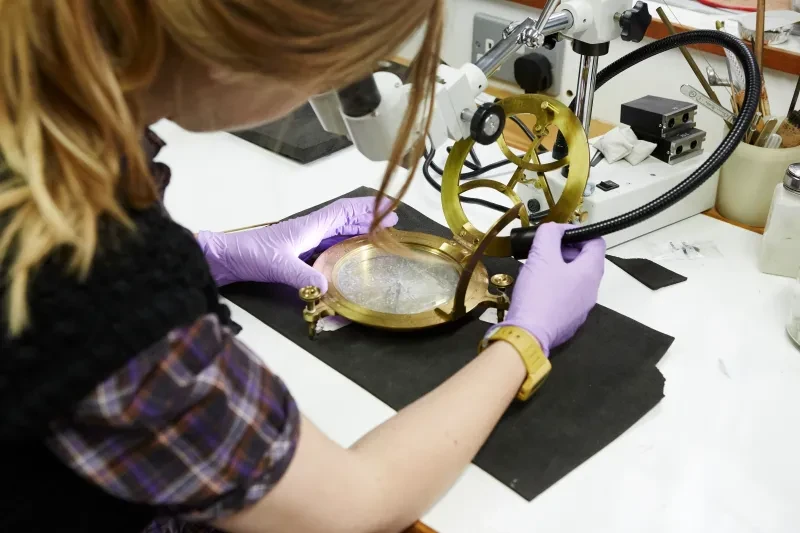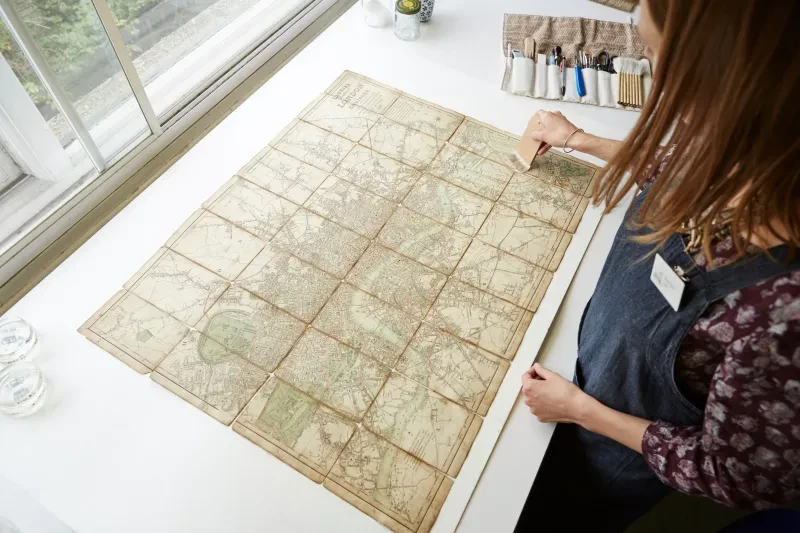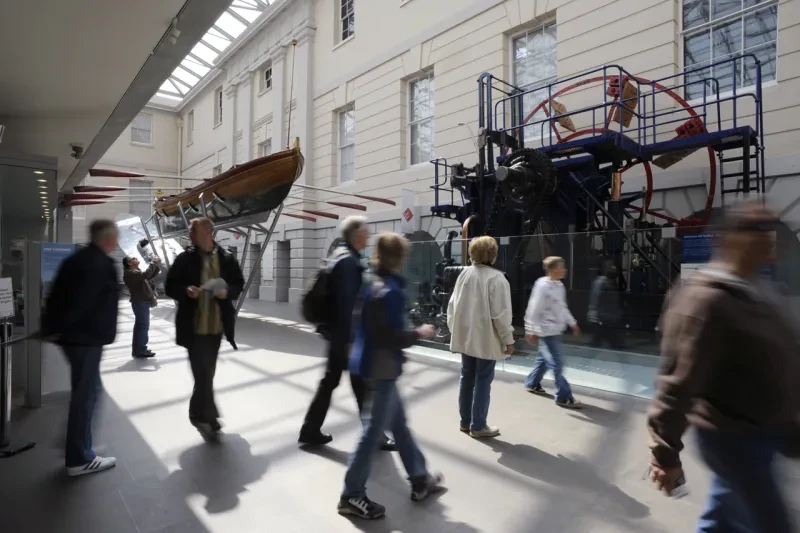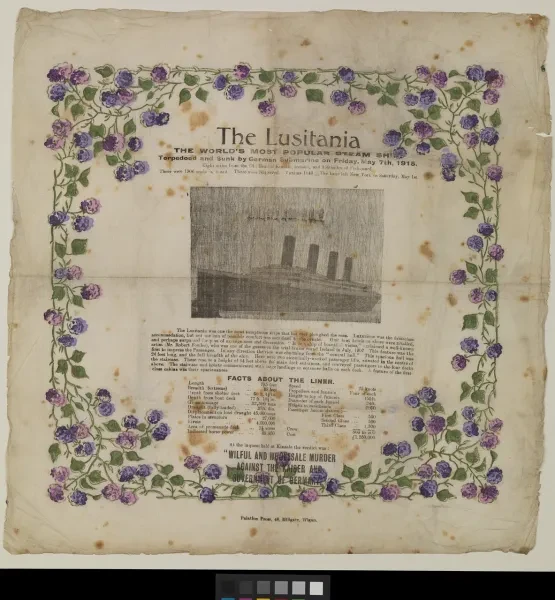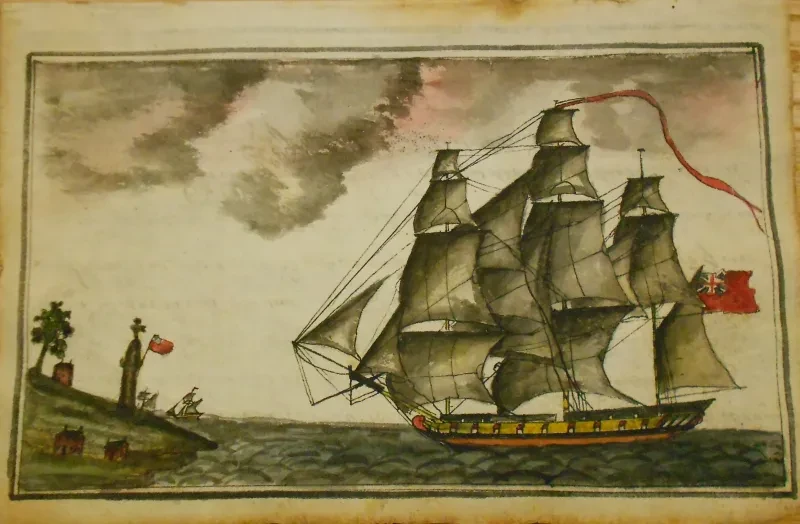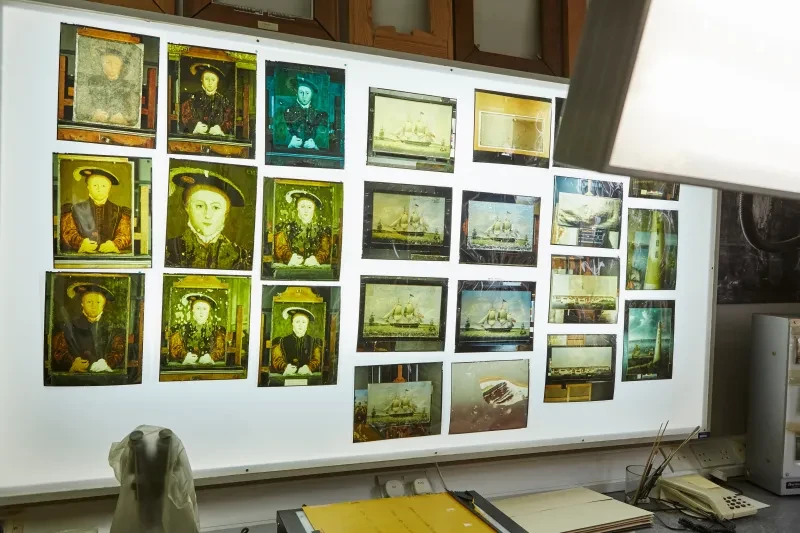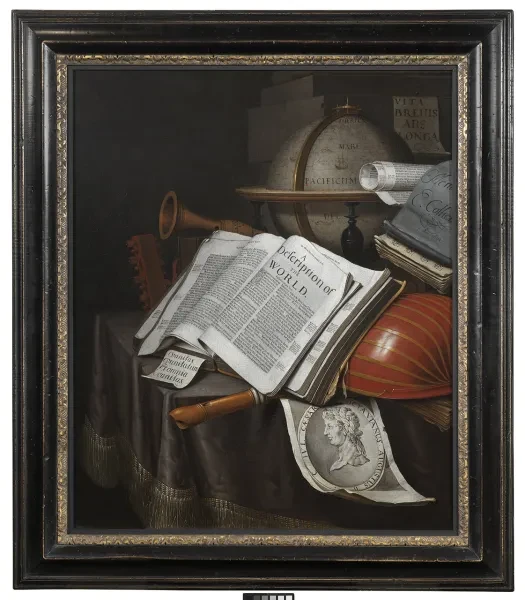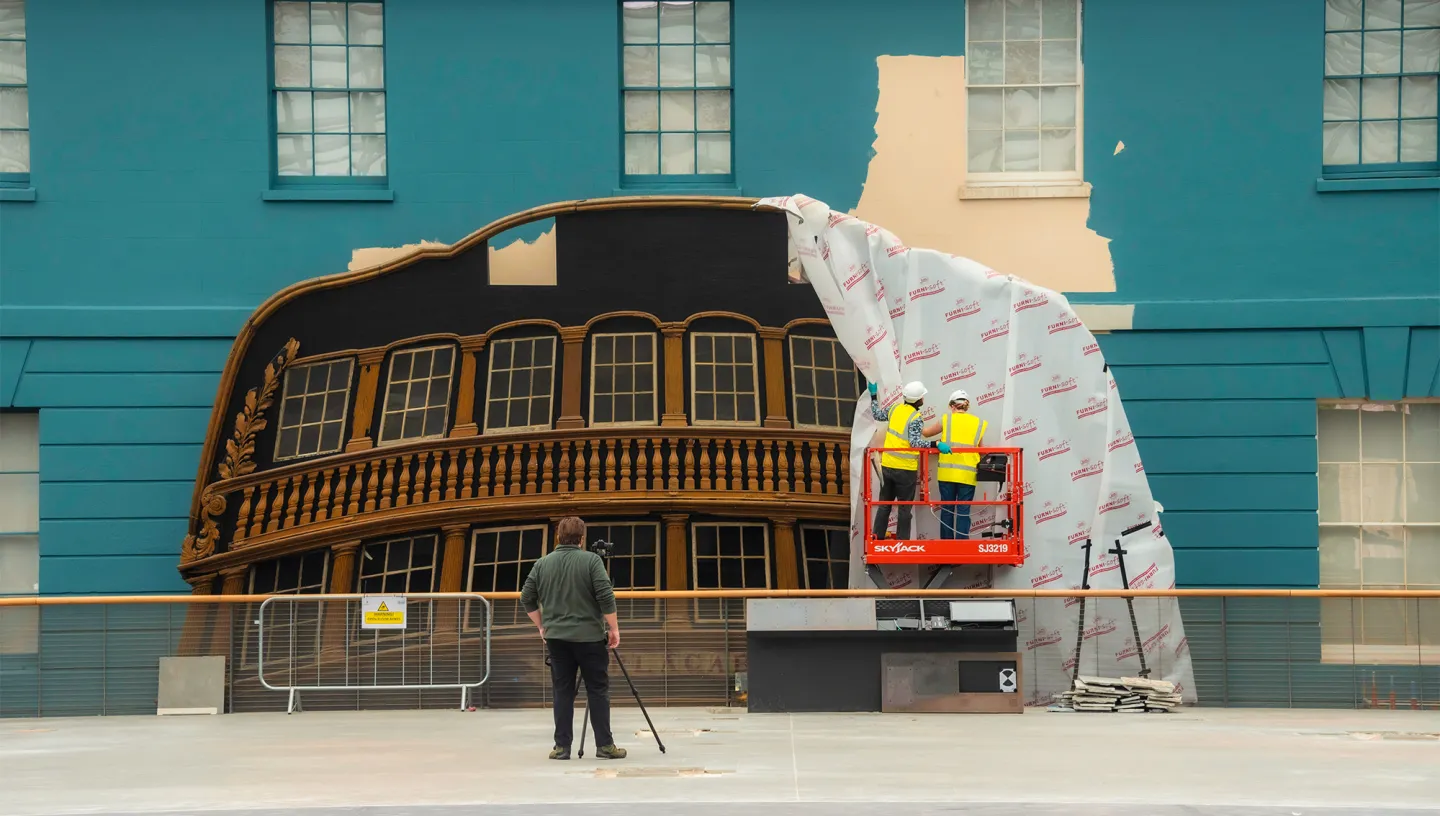
Find out more about what we are doing to preserve the nation's heritage and how you can help us.
As conservators, we get hands-on with our collections. Through preservation methods we care for the collections on display, on loan and in store. This can be as simple as a regular dusting or as complex as managing the environmental control systems in a historic site like the Queen's House.
Our work
The Conservation and Preservation Department has conservators dedicated to the following disciplines:
- Metals (scientific and navigational instruments, engines, glass, ceramics and stone)
- Frames (carved and/or gilded historic and modern frames)
- Organics (ship models, ethnographic, furniture, small craft collection)
- Paper (cartography, globes, prints and drawings, manuscripts, books etc.)
- Paintings (Tudor to contemporary on canvas and panel)
- Textile (flags and uniforms)
- Preventive (environment, pest management and materials testing)
We are fortunate that our studio facilities bring together all our conservation disciplines in one building. We have the opportunity to work across studios and to share ideas. Many of our objects incorporate more than one material so we work together to holistically treat the different parts.
More about putting objects on display
More about managing object environments
Investigating our collections
Conservation stabilises an object’s condition, while restoration seeks to replace missing parts (such as damaged areas of a painting or a crucial screw in an engineered object). Prior to starting work, we make a careful study of the objects we are working on. We identify areas requiring treatment and further our understanding of how objects have been made.
The Conservation and Preservation team works closely with other museums and conservation institutes on partnership projects leading to advances in conservation and to promote the field of conservation.
More about investigating our collections
Partnerships with other museums and conservation institutions
Working objects
Working objects demand particular skills to keep them moving. You need to know how to make a clock yourself or how to replace parts for scientific instruments so that they can perform their original function. When we do make replacement parts, we stamp the metal with our own tiny maker’s mark, so that they can always be distinguished from the original.
Providing access to our collections
Objects from the National Maritime Museum collections travel all over the world, so that they can be seen by new audiences who may not have the opportunity to visit Greenwich.
More about providing access to our collections
Student placements, interns and volunteers programme
We have a busy program of student placements and interns in all of our conservation studios to share our specialist knowledge with future generations. We also work with volunteers, particularly in paper conservation, who sometimes find themselves measuring up a rare book for its own custom-made wrapper.
